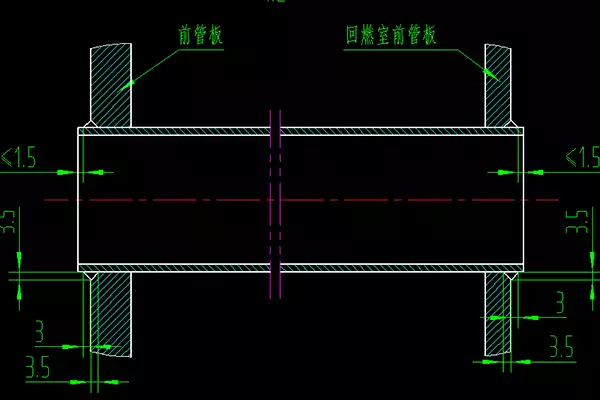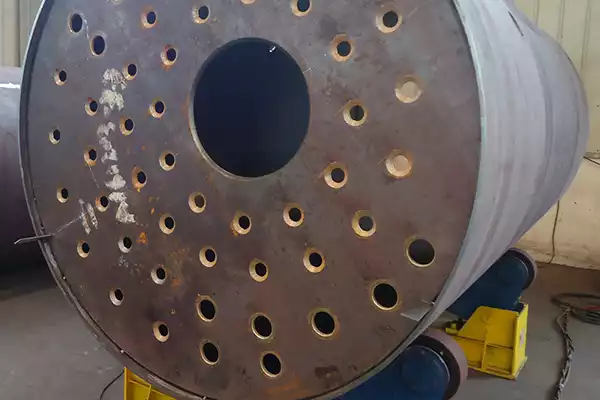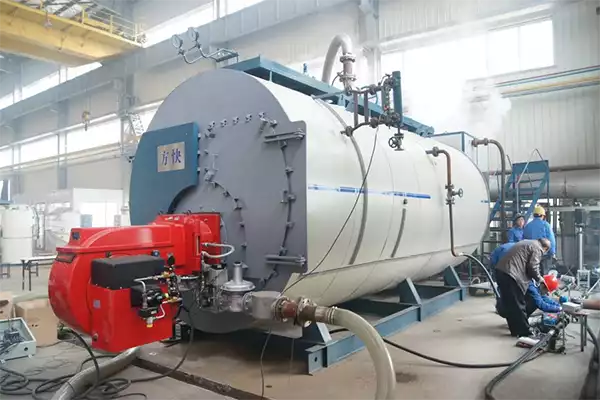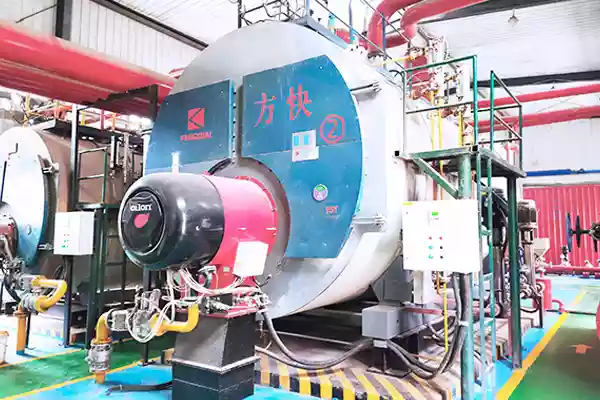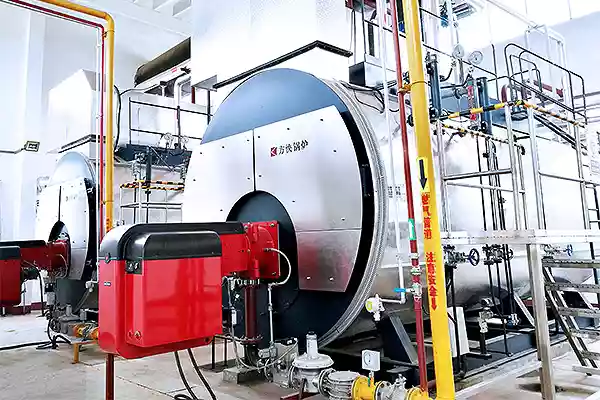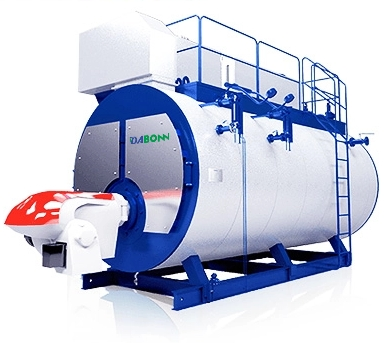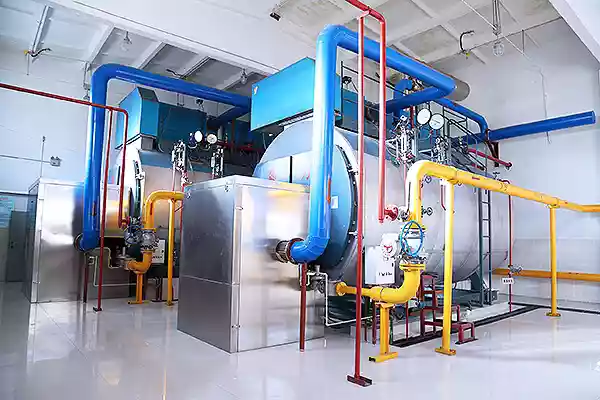
Einführung
Abhitzekessel sind für Unternehmen eine hervorragende Möglichkeit, ihre Energieeffizienz zu verbessern und die Heiz- und Kühlkosten zu senken. Mit ihnen lässt sich Abwärme aus industriellen Prozessen zurückgewinnen und in Dampf umwandeln, der zur Beheizung von Anlagen genutzt werden kann. Abhitzekessel können in verschiedenen Branchen eingesetzt werden, darunter chemisch, Erdölchemikalie, Öl und Gas, Essen, und Getränkeindustrie. In diesem Artikel, Sie werden alles darüber erfahren. Damit Sie die beste Wahl treffen können.
Warum Abhitzekessel eingesetzt werden?
Reduzieren Sie den Energieverbrauch. Abwärmekessel reduzieren die Energiemenge, die Sie zum Heizen Ihres Gebäudes und Ihres Wassers verbrauchen, indem sie die Restwärme aus Industrieprozessen auffangen und an Ihre Anlage übertragen.
Treibhausgase reduzieren. Abhitzekessel können Ihnen dabei helfen, die LEED-Zertifizierung zu erreichen, Außerdem erfüllen sie die EPA-Anforderungen zur Reduzierung von Emissionen in die Atmosphäre durch die Abscheidung von Kohlendioxid (CO2) and other harmful pollutants created by burning fossil fuels such as coal or natural gas to produce electricity.
Increase efficiency by using less fuel overall. When used in conjunction with an existing boiler system, a waste heat recovery system will increase efficiency and reduce operating costs because it reduces demand for fuel purchases while also improving overall performance at lower temperatures than traditional furnaces alone could provide on their own.
What is a waste heat boiler?
Ein Abhitzekessel nutzt die Abwärme eines Prozesses zur Dampferzeugung, welches in einer Dampfturbine zur Stromerzeugung genutzt wird. Der Vorteil dieses Systemtyps gegenüber anderen Kraftwerkstypen besteht darin, dass kein Bedarf besteht zusätzlicher Kraftstoffverbrauch oder CO2-Emissionen aus der Verbrennung fossiler Brennstoffe.
Zusätzlich, da Abhitzekessel häufig als Teil bestehender Industrieprozesse eingesetzt werden (wie etwa der Stahlproduktion), Sie können ohne nennenswerte Kapitalkosten oder Änderungen im Herstellungsprozess selbst installiert werden.
Ist ein Abhitzekessel ein Wärmetauscher??
Ein Abhitzekessel ist ein Wärmetauscher. Ein Wärmetauscher überträgt Wärme von einem Medium auf ein anderes. In diesem Fall, Bei der Niedertemperaturquelle handelt es sich typischerweise um Wasser, das durch industrielle Prozesse wie die Stromerzeugung oder die chemische Herstellung erhitzt wurde. Die Hochtemperaturquelle könnte Dampf sein, der in einem anderen Prozess erzeugt wird, oder sogar Abgase aus der Verbrennung von Brennstoffen wie Kohle oder Erdgas. Abwärmerückgewinnungskessel (WHRBs) are used to recover this otherwise wasted energy and turn it into usable steam for heating purposes.
How does a waste heat boiler work?
The waste heat boiler is a closed system, which means it uses water as both its working fluid and coolant. The water passes through tubes inside the boiler and absorbs heat from combustion gases or exhaust streams before being cooled back down again by fresh air drawn in through grilles or openings at either end of each tube bundle (called headers).
The process begins when you start up an industrial machine like an electric furnace or combustion engine. Which amounts of excess heat that isn’t required by its main purpose (zum Beispiel: generating electricity). The waste heat is then transferred via pipes to the boiler where it is used to warm up water. Until it boils into steam at high pressure before being released into the atmosphere through a pipe.
What is the capacity of waste heat boilers?
The capacity of a waste heat boiler is measured in Kilowatt (kW). This is the amount of electricity it can produce at any given time. The capacity depends on three factors:
- The efficiency of your heat recovery system, which affects how much waste heat you can use before you start losing efficiency or having to add more water to cool it down.
- The temperature of your source of waste heat, as well as its flow rate (how much air is flowing through it).
- Your needs for electricity, if you only need enough energy for one room’s worth of lights and appliances, then your requirements will be different than someone who needs power for an entire house or building!
What is the efficiency of a waste heat boiler?
A waste heat boiler is not 100% effizient. In der Tat, it’s usually around 70% zu 80%. It’s calculated as the ratio of energy output to input, and it’s usually expressed as a percentage. Zum Beispiel, if your waste heat boiler converts 80 percent of its fuel into useful heat, then its efficiency rating would be 0.8 (oder 80%).
So if you have 1 kWh of electricity coming out from your generator which is being used to produce steam for your process, then 0.7 – 0.8 kWh will be lost as waste heat through various processes within the system.
This loss occurs due to friction in pipes and valves as well as heat losses in coils and other components that make up the system itself (like pumps).
What are the components of waste heat boilers?
The main components of a waste heat boiler are:
Primary heat exchanger. This is the part of the boiler that transfers heat from one fluid to another. It’s usually made of copper or stainless steel, with a finned tube design to maximize efficiency.
Water treatment system. A water treatment system helps remove impurities from your water before it goes into your boiler so that it doesn’t clog up pumps or damage other components. There are many different types of treatment systems available depending on what kind of impurities are present in your supply source.
Control system. Waste heat boilers require constant monitoring. They need sensors and software so that you can control temperature levels throughout the operation. As well as detect if there are any problems occurring within the system itself (like leaks).
Boiler feed pump. The boiler feed pump is responsible for pumping water from the hot well, into your heating system. It’s an important component. Because it transfers heat energy to your home or building, which allows you to use less energy on heating costs!
Boiler feed tank. This component holds water at high temperatures so that it can be used by your heating system when needed.
What are the advantages and disadvantages of waste heat boilers?
Advantages of waste heat boilers
Save Energy
Save money on your heating bill by using the wasted energy from other processes in your plant or office building.
Environmental Protection
Reduce emissions because they don’t require burning fossil fuels or producing electricity for heat production.
Running Low Cost
These are less expensive to operate than traditional boilers. Because there is no need for fuel delivery or maintenance costs. Such as filters and pumps associated with traditional boilers that use fossil fuels like Erdgas oder propane gas (Flüssiggas).
Disadvantages of waste heat boilers
Installation Cost Expensive
This is because of the complex nature of waste heat boilers and the expertise required for installation. The installation costs may also vary depending on where you’re located as well as whether you choose an electric or gas-fired boiler system.
More Maintenance
They require a lot of maintenance because they work at high temperatures and generate a lot of heat. This can lead to corrosion if not properly maintained. If your boiler is not properly maintained it could result in poor performance. Even failure causes downtime for your plant/business. This can be very costly especially if no alternative source exists nearby that would allow operations to continue without interruption.
How do I choose a waste heat boiler?
Choosing a waste heat boiler is an important decision. Here are some things to consider:
- The size of the boiler. A large, high-capacity boiler will be more efficient and cost-effective than a small one. But it may not fit your space requirements or budget constraints.
- The heat source used to generate steam (z.B., electricity vs natural gas). If you’re looking for an environmentally friendly option that requires no additional fuel costs. Consider solar thermal panels as an alternative energy source for heating water before using them in your waste heat recovery system!
- Installation costs and maintenance requirements (think about whether you’ll need professional help with installation). If installing yourself isn’t something that sounds fun right now but would rather save money on someone else doing this part for you!
How much does a waste heat boiler cost?
Das cost of an waste heat boiler depends on a number of factors including the size, Effizienz, und Art des von Ihnen gewählten HRSG. Kleinere Einheiten können bereits für weniger als erworben werden $5,000, während größere Exemplare mehr kosten können $100,000.
Eine Abwärmerückgewinnungsanlage ist eine Investition, die sich lohnt, denn sie ermöglicht es Benutzern, ihre Stromrechnungen um bis zu zu senken 90%. Zusätzlich, Diese Systeme sind umweltfreundlich, da sie nicht nur Wärme zurückgewinnen können. Aber auch um ansonsten unbrauchbare Materialien in nutzbare Energiequellen wie Heißwasser oder Dampf zu recyceln.
Fazit
Wir hoffen, dass dieser Artikel Ihnen geholfen hat, die Grundlagen von Abhitzekesseln und ihre Vorteile zu verstehen. Abhitzekessel können Unternehmen dabei helfen, Energiekosten zu sparen und gleichzeitig ihren CO2-Fußabdruck zu reduzieren. Wenn Sie Fragen zu Abhitzekesseln haben oder weitere Informationen zu deren Funktionsweise wünschen, bitte kontaktieren Sie uns: +86 18623915479!
Holen Sie sich Ihren besten Preis
Schnell vergleichen 3 Kostenlose Zitate
- Ingenieur schnelles Angebot
- Die Gesamtliefergeschwindigkeit ist schnell
- Finanzielle Wahl
- Niedrige Installationskosten und Kosteneinsparungen
25 years+ of boiler R&D
Mehr als 20 innovative Technologien
